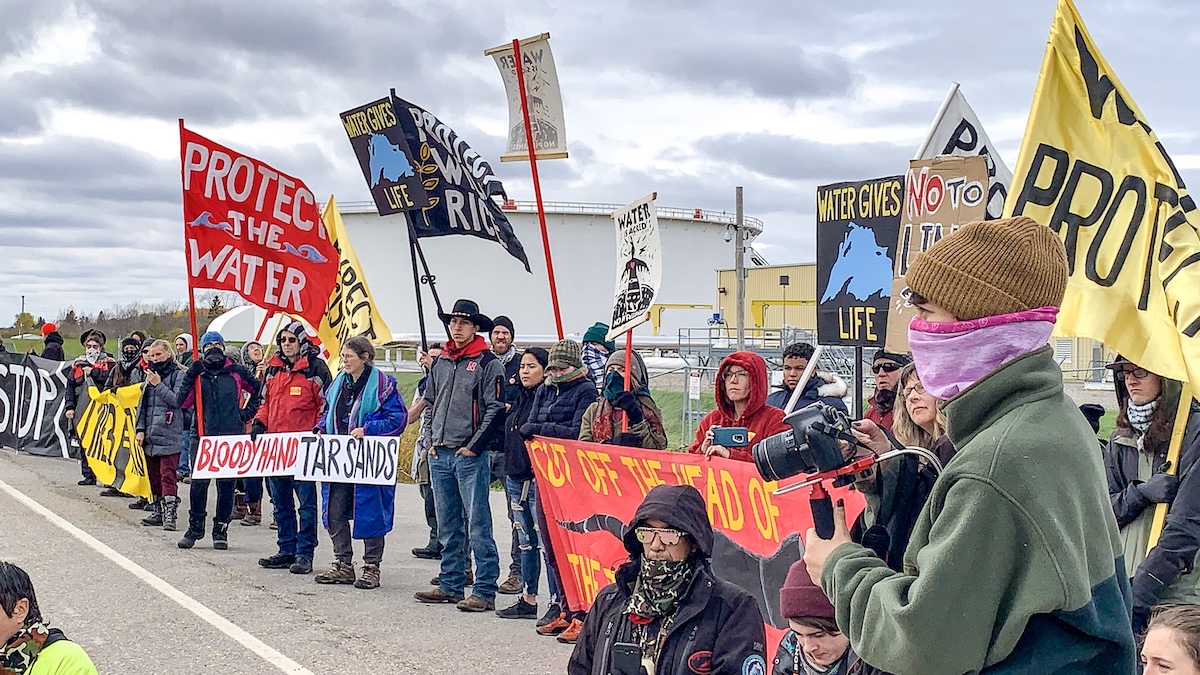https://readersupportednews.org/opinion2/277-75/62065-focus-the-system-who-rigged-it-how-we-fix-it
The System: Who Rigged It, How We Fix It
By Robert Reich, Robert Reich’s Blog
26 March 20
The coronavirus has starkly revealed what most of us already knew: The concentration of wealth in America has created a a health care system in which the wealthy can buy care others can’t.
It’s also created an education system in which the super-rich can buy admission to college for their children, a political system in which they can buy Congress and the presidency, and a justice system in which they can buy their way out of jail.
Almost everyone else has been hurled into a dystopia of bureaucratic arbitrariness, corporate indifference, and the legal and financial sinkholes that have become hallmarks of modern American life.The system is rigged. But we can fix it.
Today, the great divide in American politics isn’t between right and left. The underlying contest is between a small minority who have gained power over the system, and the vast majority who have little or none.
Forget politics as you’ve come to see it – as contests between Democrats and Republicans. The real divide is between democracy and oligarchy.
The market has been organized to serve the wealthy. Since 1980, the percentage of the nation’s wealth owned by the richest four hundred Americans has quadrupled (from less than 1 percent to 3.5 percent) while the share owned by the entire bottom half of America has dropped to 1.3 percent.
The three wealthiest Americans own as much as the entire bottom half of the population. Big corporations, CEOs, and a handful of extremely rich people have vastly more influence on public policy than the average American. Wealth and power have become one and the same.As the oligarchs tighten their hold over our system, they have lambasted efforts to rein in their greed as “socialism”, which, to them, means getting something for doing nothing.
But “getting something for doing nothing” seems to better describe the handouts being given to large corporations and their CEOs.
General Motors, for example, has received $600 million in federal contracts and $500 million in tax breaks since Donald Trump took office. Much of this “corporate welfare” has gone to executives, including CEO Mary Barra, who raked in almost $22 million in compensation in 2018 alone. GM employees, on the other hand, have faced over 14,000 layoffs and the closing of three assembly plants and two component factories.
And now, in the midst of a pandemic, big corporations are getting $500 billion from taxpayers.
Our system, it turns out, does practice one form of socialism – socialism for the rich. Everyone else is subject to harsh capitalism.
Socialism for the rich means people at the top are not held accountable. Harsh capitalism for the many, means most Americans are at risk for events over which they have no control, and have no safety nets to catch them if they fall.
Among those who are particularly complicit in rigging the system are the CEOs of America’s corporate behemoths.
Take Jamie Dimon, the CEO of JPMorgan Chase, whose net worth is $1.4 billion. He comes as close as anyone to embodying the American system as it functions today.
Dimon describes himself as “a patriot before I’m the CEO of JPMorgan.”
He brags about the corporate philanthropy of his bank, but it’s a drop in the bucket compared to his company’s net income, which in 2018 was $30.7 billion – roughly one hundred times the size of his company’s investment program for America’s poor cities.
Much of JP Morgan’s income gain in 2018 came from savings from the giant Republican tax cut enacted at the end of 2017 – a tax cut that Dimon intensively lobbied Congress for.
Dimon doesn’t acknowledge the inconsistencies between his self-image as “patriot first” and his role as CEO of America’s largest bank. He doesn’t understand how he has hijacked the system.
Perhaps he should read my new book.
To understand how the system has been hijacked, we must understand how it went from being accountable to all stakeholders – not just stockholders but also workers, consumers, and citizens in the communities where companies are headquartered and do business – to intensely shareholder-focused capitalism.
In the post-WWII era, American capitalism assumed that large corporations had responsibilities to all their stakeholders. CEOs of that era saw themselves as “corporate statesmen” responsible for the common good.
But by the 1980s, shareholder capitalism (which focuses on maximizing profits) replaced stakeholder capitalism. That was largely due to the corporate raiders – ultra-rich investors who hollowed-out once-thriving companies and left workers to fend for themselves.
Billionaire investor Carl Icahn, for example, targeted major companies like Texaco and Nabisco by acquiring enough shares of their stock to force major changes that increased their stock value – such as suppressing wages, fighting unions, laying off workers, abandoning communities for cheaper labor elsewhere, and taking on debt – and then selling his shares for a fat profit. In 1985, after winning control of Trans World Airlines, he loaded the airline with more than $500 million in debt, stripped it of its assets, and pocketed nearly $500 million in profits.
As a result of the hostile takeovers mounted by Icahn and other raiders, a wholly different understanding about the purpose of the corporation emerged.
Even the threat of hostile takeovers forced CEOs to fall in line by maximizing shareholder profits over all else. The corporate statesmen of previous decades became the corporate butchers of the 1980s and 1990s, whose nearly exclusive focus was to “cut out the fat” and make their companies “lean and mean.”
As power increased for the wealthy and large corporations at the top, it shifted in exactly the opposite direction for workers. In the mid-1950s, 35 percent of all private-sector workers in the United States were unionized. Today, 6.4 percent of them are.
The wave of hostile takeovers pushed employers to raise profits and share prices by cutting payroll costs and crushing unions, which led to a redistribution of income and wealth from workers to the richest 1 percent. Corporations have fired workers who try to organize and have mounted campaigns against union votes. All the while, corporations have been relocating to states with few labor protections and so-called “right-to-work” laws that weaken workers’ ability to join unions.
Power is a zero-sum game. People gain it only when others lose it. The connection between the economy and power is critical. As power has concentrated in the hands of a few, those few have grabbed nearly all the economic gains for themselves.
The oligarchy has triumphed because no one has paid attention to the system as a whole – to the shifts from stakeholder to shareholder capitalism, from strong unions to giant corporations with few labor protections, and from regulated to unchecked finance.
As power has shifted to large corporations, workers have been left to fend for themselves. Most Americans developed 3 key coping mechanisms to keep afloat.
The first mechanism was women entering the paid workforce. Starting in the late 1970s, women went into paid work in record numbers, in large part to prop up family incomes, as the wages of male workers stagnated or declined.
Then, by the late 1990s, even two incomes wasn’t enough to keep many families above water, causing them to turn to the next coping mechanism: working longer hours. By the mid-2000s a growing number of people took on two or three jobs, often demanding 50 hours or more per week.
Once the second coping mechanism was exhausted, workers turned to their last option: drawing down savings and borrowing to the hilt. The only way Americans could keep consuming was to go deeper into debt. By 2007, household debt had exploded, with the typical American household owing 138 percent of its after-tax income. Home mortgage debt soared as housing values continued to rise. Consumers refinanced their homes with even larger mortgages and used their homes as collateral for additional loans.
This last coping mechanism came to an abrupt end in 2008 when the debt bubbles burst, causing the financial crisis. Only then did Americans begin to realize what had happened to them, and to the system as a whole. That’s when our politics began to turn ugly.
So what do we do about it? The answer is found in politics and rooted in power.
The way to overcome oligarchy is for the rest of us to join together and form a multiracial, multiethnic coalition of working-class, poor and middle-class Americans fighting for democracy.
This agenda is neither “right” nor “left.” It is the bedrock for everything America must do.
The oligarchy understands that a “divide-and-conquer” strategy gives them more room to get what they want without opposition. Lucky for them, Trump is a pro at pitting native-born Americans against immigrants, the working class against the poor, white people against people of color. His goal is cynicism, disruption, and division. Trump and the oligarchy behind him have been able to rig the system and then whip around to complain loudly that the system is rigged.
But history shows that oligarchies cannot hold on to power forever. They are inherently unstable. When a vast majority of people come to view an oligarchy as illegitimate and an obstacle to their wellbeing, oligarchies become vulnerable.
As bad as it looks right now, the great strength of this country is our resilience. We bounce back. We have before. We will again.
In order for real change to occur – in order to reverse the vicious cycle in which we now find ourselves – the locus of power in the system will have to change.
The challenge we face is large and complex, but we are well suited for the fight ahead. Together, we will dismantle the oligarchy. Together, we will fix the system.


